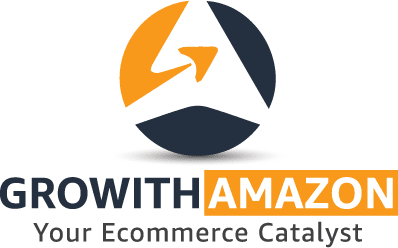
Mastering Success: Essential Tips for Amazon FBA Sellers
In the dynamic world of e-commerce, Amazon’s FBA (Fulfillment by Amazon) program stands out as a game-changer for sellers seeking efficiency and scalability. Leveraging the FBA model can undoubtedly boost your business, but mastering it requires strategic planning and execution. In this comprehensive guide, we’ll explore essential tips for Amazon FBA success.
What is Amazon FBA and how does it work
Amazon FBA, or Fulfillment by Amazon, is a service offered by Amazon that enables individuals and businesses to sell their products on the Amazon platform while leveraging Amazon’s vast fulfillment network. With FBA, sellers can store their inventory in Amazon’s warehouses, and Amazon takes care of the picking, packing, shipping, and customer service aspects of the selling process. Here’s a step-by-step overview of how Amazon FBA works:
-
Product Listing:
- Sellers create product listings on the Amazon platform, specifying details such as product title, description, images, and pricing. These listings can be for new or used items.
-
Inventory Shipment to Amazon:
- Sellers send their products to Amazon’s fulfillment centers. This involves packaging the items according to Amazon’s guidelines and shipping them to the designated Amazon warehouse. Once received, Amazon takes over the storage and management of the inventory.
-
Fulfillment by Amazon (FBA):
- When a customer places an order for a product, Amazon’s system automatically selects the item from the closest fulfillment center. Amazon employees then pick the product, pack it securely, and ship it to the customer.
-
Shipping and Delivery:
- Amazon utilizes its extensive logistics network to deliver the product to the customer’s doorstep. This often includes the option for customers to benefit from Amazon Prime’s fast and free shipping.
-
Customer Service:
- Amazon handles customer service on behalf of the seller. This includes managing returns, addressing customer inquiries, and handling any issues related to the fulfillment process.
-
Amazon Prime Eligibility:
- Products stored in Amazon’s fulfillment centers are often eligible for Amazon Prime. This can significantly boost the visibility of the products and attract more customers who prefer fast and reliable shipping.
-
Payment Processing:
- Amazon processes the payment from the customer and deducts fees for its services, including storage, pick and pack, and shipping fees. The remaining balance is then transferred to the seller’s account.
-
Inventory Management:
- Amazon provides tools and reports for sellers to monitor their inventory levels and sales performance. Sellers can restock inventory as needed to avoid running out of stock.
-
Access to Global Markets:
- FBA allows sellers to reach customers not only in their home country but also in international markets. Amazon takes care of the complexities of cross-border logistics, enabling sellers to expand their reach effortlessly.
-
Performance Metrics and Feedback:
- Sellers can track their performance through various metrics provided by Amazon, including sales, customer feedback, and fulfillment metrics. Positive customer feedback is crucial for maintaining a strong seller reputation.
Amazon FBA provides sellers with a streamlined and scalable e-commerce solution, allowing them to focus on sourcing and marketing products rather than managing the logistics of order fulfillment. It’s a popular choice for both beginners and experienced sellers looking to tap into Amazon’s vast customer base and benefit from the efficiency of the FBA program.
Understanding the Amazon FBA Calculator: A Primer
The Amazon FBA calculator is a comprehensive tool designed to help sellers estimate the fees associated with their products, giving them a clearer picture of potential profits. This tool takes into account various factors, including product dimensions, weight, and fulfillment method, providing a precise breakdown of costs.
Key Features and Functions
-
Fulfillment Fees: The calculator provides a breakdown of Amazon’s fulfillment fees, factoring in storage, packing, and shipping costs. This information is crucial for determining the overall cost of getting your product into the hands of customers.
-
Referral Fees: Sellers are charged a referral fee based on the category of the product they’re selling. The amazon seller fees calculator
helps you understand these fees and factor them into your pricing strategy. -
Shipping Costs: By inputting the dimensions and weight of your product, the calculator helps estimate shipping costs. This is especially valuable for sellers dealing with a variety of products with different sizes and weights.
-
Profitability Analysis: One of the most powerful features is its ability to provide a profit and ROI (Return on Investment) analysis. This allows sellers to make informed decisions about product selection and pricing.
Strategic Pricing with Precision
Armed with the insights from the FBA calculator, sellers can strategically price their products to remain competitive while ensuring profitability. The ability to experiment with different scenarios and instantly see the financial implications empowers sellers to make data-driven decisions.
Optimizing Product Selection
The FBA calculator aids in evaluating the financial viability of potential products. By inputting the details of a product before deciding to sell it, sellers can identify whether the associated fees align with their profit margins and business goals.
Efficiency in Inventory Management
Accurate cost estimations provided by the amazon seller fba calculator enable sellers to manage their inventory efficiently. This includes avoiding overstocking, reducing storage fees, and ensuring that the products in their portfolio contribute positively to the bottom line.
Here are essential tips for Amazon FBA success:
1. Choose Your Products Wisely
Before diving into the FBA world, meticulous product selection is crucial. Conduct thorough market research to identify high-demand, low-competition products. Consider factors like product weight, size, and profit margins. Choosing the right products lays the foundation for a successful FBA venture.
2. Optimize Product Listings
Stand out in the crowded Amazon marketplace by optimizing your product listings. Craft compelling, keyword-rich titles and descriptions. Utilize high-quality images to showcase your products. Implementing Amazon SEO best practices will improve your visibility, driving more potential buyers to your listings.
3. Effective Inventory Management
Maintaining an accurate inventory is key to avoiding stockouts or overstock situations. Leverage Amazon’s tools for inventory forecasting and monitor your inventory levels regularly. Staying in control of your stock ensures timely reordering and minimizes storage fees.
4. Price Competitively
Amazon’s marketplace is price-sensitive, and competitive pricing is essential. Regularly check and adjust your prices based on market trends and competitor analysis. Utilize automated pricing tools to stay competitive while maximizing profits.
5. Utilize Amazon FBA Tools
Amazon offers a range of tools to streamline your FBA operations. Leverage the power of tools like Amazon Seller Central, FBA Revenue Calculator, and Amazon Seller App for real-time analytics, order processing, and inventory management. Stay informed and make data-driven decisions.
6. Effective Marketing Strategies
Implementing robust marketing strategies is crucial for FBA success. Utilize Amazon PPC campaigns to increase visibility and drive targeted traffic to your listings. Optimize your product listings for external search engines to attract potential buyers beyond the Amazon platform.
7. Optimized Packaging
Amazon places a high value on customer satisfaction, and packaging plays a role in this. Ensure your products are well-packaged and meet Amazon’s packaging guidelines. This not only protects your products during shipping but also enhances the overall customer experience.
8. Outstanding Customer Service
Exceptional customer service is a powerful differentiator. Respond promptly to customer inquiries and address issues with professionalism. Positive reviews and satisfied customers contribute significantly to the success of your FBA business.
9. Stay Informed about Amazon Policies
Amazon’s policies and guidelines can change, impacting your FBA business. Stay informed about policy updates, terms of service, and any changes in fees. Regularly check the Amazon Seller Central portal for announcements and updates.
10. Continuous Improvement
The e-commerce landscape is dynamic, and successful FBA sellers adapt to changes. Regularly evaluate your strategies, experiment with new approaches, and stay ahead of industry trends. Continuous improvement is the key to sustained success in the ever-evolving world of Amazon FBA.
Benefits of Using FBA Services
Using Amazon FBA (Fulfillment by Amazon) services offers numerous benefits for sellers, whether they are individual entrepreneurs or large businesses. Here are some key advantages:
-
Efficient Order Fulfillment:
- Amazon takes care of the entire fulfillment process, from picking and packing to shipping and handling customer service. This allows sellers to focus on other aspects of their business, such as sourcing products and marketing.
-
Prime Shipping Eligibility:
- Products stored in Amazon’s fulfillment centers are often eligible for Amazon Prime. This can significantly increase the visibility of products, attract more customers, and provide a competitive edge with fast and free shipping options.
-
Global Reach:
- FBA allows sellers to reach customers not only in their home country but also in international markets. Amazon handles the complexities of cross-border logistics, making it easier for sellers to expand their customer base globally.
-
Customer Trust and Satisfaction:
- Amazon’s reputation for reliable and fast shipping contributes to customer trust. FBA products often have a higher perceived value due to the association with the trusted Amazon brand.
-
Professional Customer Service:
- Amazon manages customer inquiries, returns, and other issues related to the fulfillment process. This ensures a high level of customer service, leading to positive reviews and repeat business.
-
Scalability:
- FBA allows sellers to scale their business without worrying about the operational challenges of order fulfillment. As sales increase, Amazon’s infrastructure adapts to handle the growing volume of orders.
-
Time and Cost Savings:
- Sellers can save time and reduce costs associated with warehousing, packing, and shipping. Amazon’s economies of scale often result in lower shipping rates and storage fees than individual sellers might achieve on their own.
-
Access to Amazon Prime Day and Deals:
- FBA sellers gain access to special events like Amazon Prime Day and other promotional deals. This can lead to increased sales during peak shopping periods.
-
Automated Inventory Management:
- Amazon provides tools and reports to help sellers manage their inventory efficiently. Automated systems track stock levels, and sellers receive alerts when it’s time to restock.
-
Multi-Channel Fulfillment:
- FBA sellers can use Amazon’s Multi-Channel Fulfillment to fulfill orders from other sales channels outside of Amazon. This enables a centralized fulfillment solution for orders from various platforms.
-
Enhanced Buy Box Eligibility:
- Products fulfilled by Amazon are often prioritized in the Buy Box, increasing the chances of making a sale. This is crucial for maintaining a competitive edge on the platform.
-
Simplified Returns Process:
- FBA streamlines the returns process for customers, providing a hassle-free experience. Amazon manages returns and inspects returned items, allowing sellers to focus on their business rather than handling individual returns.
By leveraging Amazon FBA services, sellers can enhance their overall efficiency, customer satisfaction, and competitiveness in the e-commerce landscape. The program provides a comprehensive solution for order fulfillment, allowing sellers to concentrate on growing their business and expanding their product offerings.
Conclusion
Mastering Amazon FBA requires a holistic approach that combines strategic product selection, optimization, and effective operational management. By implementing these tips, you can position your FBA business for success, navigate challenges, and build a thriving presence on the world’s largest online marketplace. Stay agile, stay informed, and watch your Amazon FBA venture flourish. Happy selling!
Fill your details here – SPC – Grow with Amazon (growithamazon.com)
TYPES OF MANAGEMENT AND CONSULTING SERVICES





